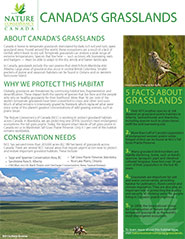Conserving Canada's grasslands
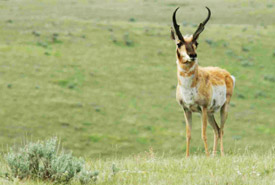
Pronghorn antelope, Old Man on His Back (Photo by Karol Dabbs)
There are many reasons why grasslands are endangered in Canada and around the world.
Globally, grasslands are faced with continuing habitat loss, fragmentation and desertification. These impact both biodiversity and people who rely on healthy grasslands for their livelihood. More than 50 per cent of the world’s temperate grasslands have been converted to crops and other land uses. Much of what remains is intensively grazed by livestock; they replaced what were some of the planet’s greatest concentrations of wild grazing animals, such as plains bison.
In Canada, grasslands include the vast prairies that stretch from Manitoba into Alberta. Large areas of grassland also occur in central British Columbia. Smaller pockets of prairie and savannah habitats can be found in Ontario and the eastern part of Vancouver Island.
Protecting the prairies
The Nature Conservancy of Canada (NCC) in Manitoba is working to protect one of this country’s most endangered ecosystems: the tall grass prairie.
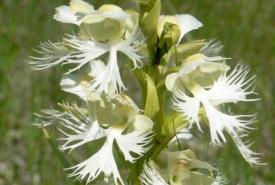
Endangered western prairie white-fringed orchid in the tall grass prairie, MB (Photo by NCC)
The tall grass prairie ecosystem once stretched from near present-day Winnipeg all the way south to Texas. Today, the largest intact blocks of tall grass prairie in Canada occur in the Tall Grass Prairie Natural Area.
The area supports a variety of habitat types: wet and dry tall grass prairie, marshes and fens, savannah and dense woodlands, riparian (riverbank) areas and rivers.
Thousands of species use these habitats, including many that are listed on national or provincial endangered species lists. Over half of the province of Manitoba's population of the endangered western prairie white-fringed orchid occurs here.
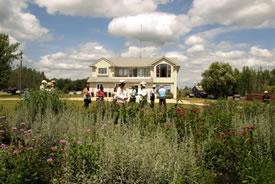
The Weston Family Tall Grass Prairie Interpretive Centre, MB (Photo by Mike Dembeck)
NCC has secured a significant portion of the western prairie white-fringed orchid habitat in Canada. We manage this habitat through prescribed fire, grazing and annual mowing. NCC is currently studying other ways to restore this ecosystem.
In 2009, NCC acquired a 160-acre (65-hectare) property containing a two-storey house on Manitoba’s tall grass prairie. The house has since been converted into The Weston Family Tall Grass Prairie Interpretive Centre. Here, visitors can learn about species found in the area, including the western prairie white-fringed orchid and its vulnerable habitat in the tall grass prairie.
Grassland bird protection
The West Souris Mixed-grass Prairie Natural Area (WSMGP) represents one of Manitoba’s last strongholds for grassland birds.
Grassland birds are one of the most threatened groups of birds in North America. Species that were once seen across most of southern Manitoba are now mostly limited to the extreme southwest corner of the province. These include chestnut-collared longspur, burrowing owl and Baird’s sparrow.
Temperate grasslands are the most converted and least protected habitat on Earth. The relatively large and intact prairies that remain in the WSMGP are important in the conservation of grassland birds and many other species, such as Great Plains toads and mule deer. Twenty of Canada’s species at risk can also be found here.
To date, NCC has secured more than 203,000 acres (82,189 hectares) of grasslands, including temperate and prairies, across Canada.
Here are some facts about grasslands and prairies that can be found on properties owned and managed by NCC across Canada:
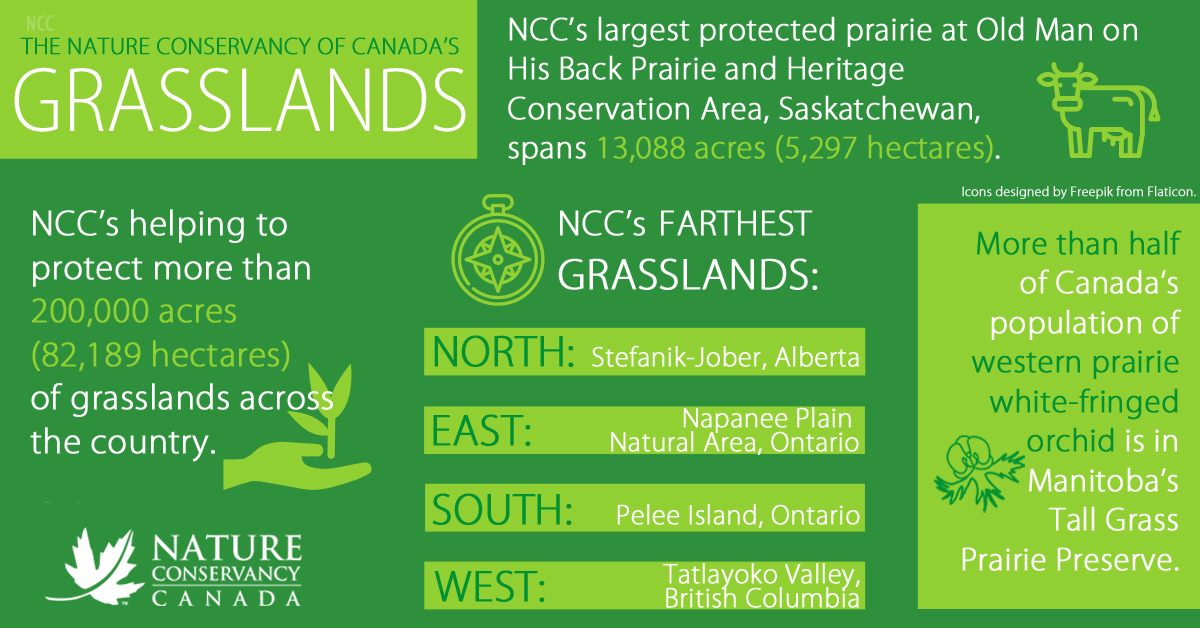
NCC’s largest protected grassland:
- Old Man on His Back Prairie Heritage and Conservation Area, Saskatchewan, with 13,088 acres (5,297 hectares) of native prairie.
NCC’s most northern grassland:
- Stefanik-Jober, Alberta
NCC’s most southern grassland:
- Pelee Island, Ontario
NCC’s most eastern grassland:
- Napanee Plain Natural Area, Ontario
NCC’s most western native grasslands
- Tatlayoko Valley, British Columbia
Most endangered prairie species on NCC property:
- Western prairie white-fringed orchid (International Union for Conservation of Nature endangered)

